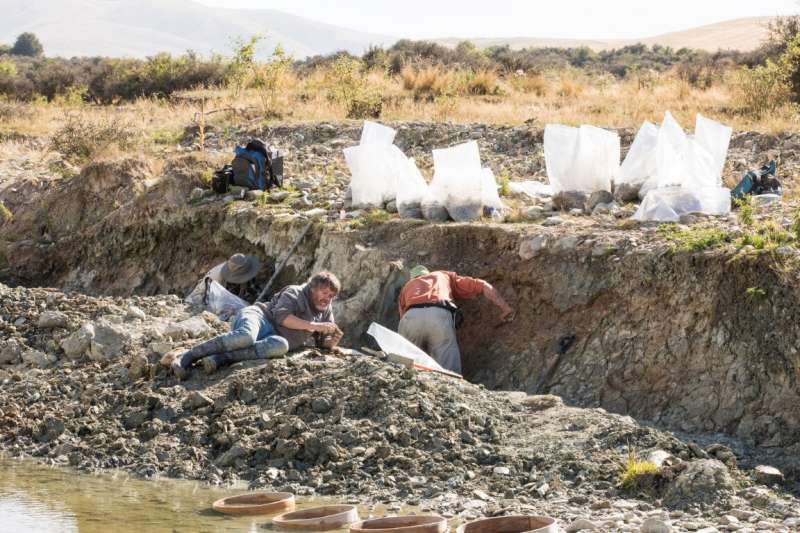Dead duck divides dates for fossil finds

A newly discovered extinct duck that lived in ancient Aotearoa New Zealand could be key to dating other finds from an ancient lake bed uncovered in St Bathans, Central Otago.
The new species, a small diving duck researchers have named Manuherikia primadividua, lived between 16 and 19 million years ago on a huge paleolake called Lake Manuherikia.
Researchers are excited by the discovery because M. primadividua is the first animal found at St Bathans that could help them narrow down dates for other finds.
Associate Professor Trevor Worthy of Flinders University, Adelaide, is the lead author of a paper recently published in the peer-reviewed journal Geobios describing the new bird.
He says the duck appears to have replaced another, related duck species, Manuherikia lacustrina, at some point in the three-million-year period preserved in the fossil record at St Bathans.
"We haven't found these two ducks in the same fossil layer, and we think that's because they lived at different times, with Manuherikia primadividua outcompeting and eventually replacing its older cousin.
"The switch in duck species may well occur at the same time as a change in the vegetation in the region, revealed by pollen studies years ago by Mike Pole and Barry Douglas. If so, this may be evidence of climate change affecting the St Bathans Fauna."
Dr. Paul Scofield, senior curator, natural history, at Canterbury Museum and one of the paper's co-authors, says the two ducks will allow many of the other finds from St Bathans to be dated.
"If we find a new species alongside M. lacustrina fossils, we know it lived in this earlier period, whereas if it's alongside the new species it lived a bit later. So it allows us to start putting all the animals we've found at St Bathans in some sort of chronological order for the first time."
This discovery underpins the importance of knowing exactly which layer a fossil derives from.

"You might think, "Oh, it's just another dead duck," but it's an important step in building up a picture of how the animals and plants living on this ancient lake changed over time," Dr. Scofield says.
Fossils of animals that lived in the sea are relatively common in New Zealand, but the remains of ancient land-based animals are extremely rare.
The ancient lake bed preserved at the St Bathans site is the most significant known deposit of land-based animal fossils in the country.
Excavations at St Bathans have been ongoing since 2001 and have unearthed more than 40 ancient bird species, including the giant, possibly carnivorous parrot Heracles inexpectatus.
Scientists have also found bats, turtles and a crocodile—discoveries which have completely upended what we thought we knew about the evolution of New Zealand's fauna.
Manuherikia primadividua is one of four ducks in the genus Manuherikia that paleontologists have found at St Bathans, and one of nine waterfowl species.
The species name, primadividua, was given by the paleontologists to acknowledge that the duck provides the first evidence of a chronological division in the St Bathans fauna.
The Manuherikia primadividua fossils are held by Canterbury Museum and the Museum of New Zealand Te Papa Tongarewa.
More information: Trevor H. Worthy et al, A new species of Manuherikia (Aves: Anatidae) provides evidence of faunal turnover in the St Bathans Fauna, New Zealand, Geobios (2021). DOI: 10.1016/j.geobios.2021.08.002
Provided by Canterbury Museum





















